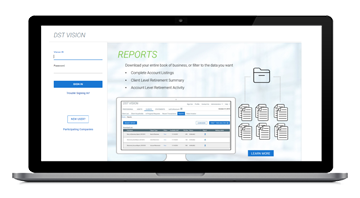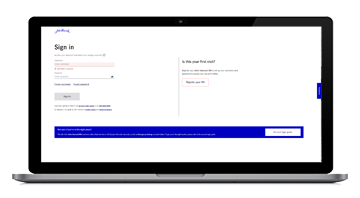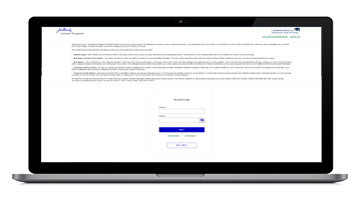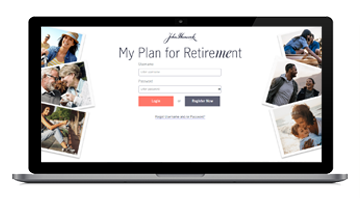What happens in a recession?
There's been more talk recently about the prospect of a U.S. recession amid this year's rise in tariff-related market volatility. But what is a recession, what triggers its onset, and what happens when one is under way?
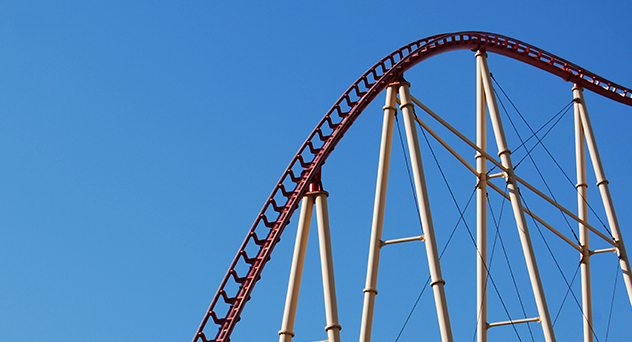
What is a recession?
From a technical standpoint, a recession is often defined as two consecutive quarters of shrinking gross domestic product (GDP). But more simply, it’s a sustained contraction in economic activity. Dwindling production and consumption as well as higher unemployment or lower prices are telltale signs the economy has made its way into recession territory.
The National Bureau of Economic Research (NBER), a leading economic think tank founded in 1920, is the generally recognized authority in the United States when it comes to declaring a recession. It calls a recession “a significant decline in economic activity spread across the economy, lasting more than a few months, normally visible in real GDP (Gross Domestic Product), real income, employment, industrial production, and wholesale-retail sales.”¹
NBER usually declares a recession from 6 to 18 months after the recession’s start. “We wait long enough so that the existence of a recession is not at all in doubt.”² There are of course exceptions to this rule, with the COVID-19-related shock to the economy being a prime example of when NBER made a declaration almost contemporaneously with the recession’s start.
The latest Market Intelligence is now available
Market Intelligence is designed for financial professionals, with charts highlighting market and economic themes that are top of mind for investors.
When were the most recent prior recessions?
The most recent recession in the United States dates back to the early days of the COVID-19 crisis. According to NBER, a recession began in February 2020 and ended in April 2020, making it the shortest recession on record.
The recession before that was also one of the most memorable: the Great Recession, which began at the end of 2007. It was one of the deepest recessions on record, and some of its effects, particularly on housing prices³ and wages, lasted beyond its official end date in mid-2009. Real GDP fell 4.3% peak to trough, and unemployment went from 5.0% in December 2007 to 9.5% in June 2009, when the recession technically ended. Unemployment didn’t peak until it hit 10.0% in October 2009, showing that the end of a recession doesn’t necessarily signal the end of economic distress.⁴
The two previous recessions were shorter and milder. The 1990/1991 recession, prompted by an oil price shock from the first Gulf War, and the 2001 recession, fed by the dot-com bust and the 9/11 attacks, lasted only eight months each.⁵
What causes a recession?
Recessions generally stem from waning confidence and a sense among businesses and consumers that the economic tide is shifting. But from a broader perspective, recessions are often the result of structural changes in one or more key industries, economic shocks, or even psychological forces such as extreme optimism (which can lead to speculative behavior). Financial bubbles bursting (such as the stock market crash of 1929 or the real estate crash of 2007) can also be the cause of recessions. Recessions can also be induced by central banks; as they try to lower inflation by raising interest rates, they may inadvertently (or sometimes even knowingly) cause a recession.
What happens in a recession?
- Unemployment often rises but can vary—Unemployment typically rises as businesses cut back or shut down, but the degree of disruption can vary. It barely reached 7.0%6 during the relatively mild recession of 1990/1991 and went higher after the recession was deemed over. As the 1992 election approached, this lingering effect of the recession led to the “it’s the economy, stupid” slogan used to great effect by Bill Clinton’s campaign. Unemployment barely moved during the brief 2001 recession, going only to 5.3%.7
- People may save more—but this can backfire—People who still have their jobs tend to spend less in recessions, worrying that they may become unemployed. Those who are already unemployed naturally cut back. But if too many people reduce their spending, it can invoke the “paradox of thrift,” made famous by economist John Maynard Keynes. One person’s spending is another person’s income, and if too many people spend less, the result is a negative spiral resulting in progressively lower income and higher unemployment. What makes sense for an individual can harm the economy.
- Manufacturing and services can decline—The Institute of Supply Management’s Purchasing Managers’ Index, which surveys senior executives in a wide variety of industries, showed 131 consecutive months of manufacturing growth from the spring of 2009, when the Great Recession ended, to the recent pandemic-induced recession. An index reading of over 50 indicates economic expansion, while below 50 represents contraction.
- Prices can fall—Severe recessions can involve deflation and a reduction in prices, especially of discretionary items and real estate. Spending focuses on relatively low-priced necessities. But recessions can also be responses to efforts to fight inflation, as with the recessions between 1980 and 1982, when the U.S. Federal Reserve (Fed) kept short-term interest rates well into double digits.
- Liquidity can dry up—Banks become less motivated to lend in recessions for fear of not being repaid. Interest rates also tend to fall, shrinking banks’ profit margins.
- Deficits can increase—Governments often increase spending to offset the recession’s effects. At the same time, tax receipts fall as corporate and personal incomes decline.
Can recessions be predicted?
As is the case when predicting future outcomes in general, there are complexities associated with predicting recessions. Nonetheless, investors often rely on a combination of indicators to help position their portfolios for changes in the economic cycle. Historically, both an inverted yield curve and the Sahm Rule have proven to be two harbingers of a recession.
Inverted yield curve
Economists often look for a so-called inverted yield curve as a recession predictor and companion. The curve inverts when short-term U.S. Treasury securities yield more than longer-dated ones, which normally provide greater income to reward investors for tying up their money for longer periods. When the curve inverts, it may be a sign that companies have little desire to invest in long-dated projects, which they typically finance with long-dated borrowing. This caution may be suggestive of an impending recession. Also, since banks borrow short term and lend long term, an inverted curve makes their business unprofitable. If it’s unprofitable for banks to lend, it’s hard for the economy to grow.
While all of this seems logical, the inverted yield curve’s ability to predict a recession has been called into question in recent years. Since a portion of the curve inverted beginning in July 2022—when the yield of the 2-year U.S. Treasury bond began to consistenly surpass that of the 10-year note—the U.S. economy has proven to be remarkably resilient. Although it’s important to note that this indicator has failed to predict a recession only once since 1955, the average time it’s taken for the economy to slip into a recession after a yield curve inversion has also generally been between 6 and 24 months. The most recent yield curve inversion was a long one, as it didn’t end until 10-year yields again surpassed 2-year yields in September 2024. However, we’re now almost 3 years past the start of that inversion, and the U.S. economy has yet to fall into a recession.
The yield curve over time
Plotting the yields (%) of U.S. Treasuries with varying maturities (years) at different points in time
The Sahm Rule
Another widely used indicator, known as the Sahm Rule, tends to signal a recession when the three-month moving average of the U.S. employment rate is at least half a percentage point higher than its 12-month low. Relied on due to its simplicity and historical accuracy in predicting prior U.S. recessions, the Sahm Rule is meant to act as an early warning for policymakers, inciting them to begin paying closer attention to weakening economic conditions.
Recently, former Fed economist and creator of the indicator, Claudia Sahm, has suggested there are instances where the indicator could be brought to question. While she has implied that the triggering of the rule doesn’t necessarily mean the economy is in a recession, it can be interpreted as a sign that “momentum is in that direction.”
Stock market activity can send mixed signals
Stock market declines often precede recessions, but the timing can be hard to predict. Paul Samuelson, the Nobel Prize-winning economist, famously said that the stock market has predicted nine of the last five recessions.
Not only are falling markets poor predictors of recessions (the 1987 crash, featuring the biggest one-day percentage drop in history, didn’t lead to one), but recessions don’t necessarily imply stock market declines. In 6 of the 11 recessions since the late 1940s, the S&P 500 Index rose.⁸ Then again, the market fell 37% during the Great Recession itself and was down 57% peak to trough during that period. Still, the immediate onset of a recession with a nearly 40% market decline, as we experienced during the recent pandemic, is an extraordinary event.
Recessions versus depressions
A depression is a severe recession whose duration is usually measured in years rather than months. Depressions may also feature the breakdown of a key part of the economy, particularly the financial system. The main reference point is the Great Depression, which lasted throughout the 1930s, but the United States had a series of panics, resulting primarily from land speculation and other excesses in the 19th and early 20th centuries, until the 1913 creation of the Fed, designed “to provide the nation with a safer, more flexible, and more stable monetary and financial system.”⁹
The Fed didn’t prevent the relatively brief post-war depression of 1920/1921, and it likely exacerbated the Great Depression by keeping money tight when the economy was starved for cash and caught in a deflationary spiral. It’s now generally accepted that severe recessions need a major influx of cash from fiscal (government spending) and/or monetary policy (low interest rates created by the Fed) to keep them from becoming depressions. Today, and despite trillions of dollars of economic support, some noted economists fear we could be headed for, or are already in, another depression. Former Fed Vice Chair Alan Blinder said, “We think of a depression as a recession that is very, very deep and very, very long. That’s the kind of thing that could happen.”¹⁰
Is a recession coming?
There’s no real answer to that question, as predicting the next recession is anything but an exact science. Due to the nature of economic indicators, the beginning of a recession can only be confirmed after it has actually started, so it’s entirely possible for an economy to be in a recession without investors even knowing it.
What is certain, however, is that a healthy economy regularly transitions from expansionary to contractionary phases and back again. Navigating through these cycles can be unsettling but it’s important to stay focused on a long-term goal and remember that recessions come and go. Revisiting your investment strategy in this context is vital but keeping your emotions in check is equally important.
1 National Bureau of Economic Research, 1/7/08. 2 National Bureau of Economic Research, Business Cycle Dating Committee, 10/21/03. 3 Prices fell 30% from their mid-2006 peak to mid-2009, federalreservehistory.org. 4 Federalreservehistory.org. 5 Federal Reserve of St. Louis. 6 Unemploymentdata.com. 7 Unemploymentdata.com. 8 Seeitmarket.com. 9 Federalreserve.org. 10 ccn.com.
Important disclosures
Important disclosures
Views are those of the authors and are subject to change. No forecasts are guaranteed. This commentary is provided for informational purposes only and is not an endorsement of any security, mutual fund, sector, or index, and is not indicative of any John Hancock fund. Diversification does not guarantee a profit or eliminate the risk of a loss. Past performance does not guarantee future results.
The S&P 500 Index tracks the performance of 500 of the largest publicly traded companies in the United States. It is not possible to invest directly in an index.
The value of a company’s equity securities is subject to change in the company’s financial condition and overall market and economic conditions. Fixed-income investments are subject to interest-rate and credit risk; their value will normally decline as interest rates rise or if an issuer is unable or unwilling to make principal or interest payments. Investments in higher-yielding, lower-rated securities include a higher risk of default. Foreign investing, especially in emerging markets, has additional risks, such as currency and market volatility and political and social instability. Mortgage- and asset-backed securities may be sensitive to changes in interest rates, and may be subject to early repayment and the market’s perception of issuer creditworthiness. Liquidity—the extent to which a security may be sold or a derivative position closed without negatively affecting its market value, if at all—may be impaired by reduced trading volume, heightened volatility, rising interest rates, and other market conditions. The use of hedging and derivatives could produce disproportionate gains or losses and may increase costs. Active and frequent trading of securities can increase transaction costs (lowering performance) and taxable distributions. Please see the fund’s prospectus for additional risks.
MF4380151
